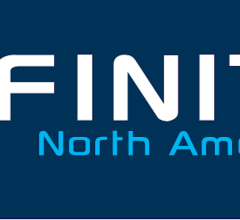As hard as the industry tried to defeat the Deficit Reduction Act (DRA), it is here for at least the near future. The earliest we can expect relief is January 2008 if the winds of reasonability fall upon Congress. The lack of benchmarks and objective evidence supporting the cost of service was one of many challenges lobbyists faced over the past 10 months. Thus, outcomes for the outpatient imaging industry have become bleak. The industry is going to have to tighten its belt to survive. Two choices exist for many in the outpatient imaging world: (1.) Cut back and become lean or (2.) close the doors.
As of this writing, I am aware of at least three centers that are closing their doors in light of the DRA — and it’s only early January. What once was a good business serving about 12 to 14 MRI patients per day is now being forced to cease operations. Other outpatient imaging centers have chosen to give it time and fight back. They have cancelled equipment orders and expansions, but have demonstrated an increased interest in efficiency, based software and consultants. Better billing companies, cost cutting protocols and trimming personnel are roundtable discussions happening daily across this country
An outsider would think we were participating in a failing industry instead of a rapidly growing one. They would surmise that outpatient imaging is on the cusp of becoming the next “dot-com bust.” It may be that the dot-com industry holds the record for the fastest rise and fall, but it also may be the jobless IT techs who rescue the outpatient imaging industry as we enter these trying times.
This industry is as important to the practice and delivery of medicine in America as it has ever been. It is expected to grow with the baby boomer explosion by eight to 10 percent.1 Where does that leave those providers rangling with growing schedules and tightened budgets? Outpatient centers must become more efficient and protect themselves from commercial payers following the Medicare path. Sitting down with a payer and providing data that supports the actual cost of delivery is crucial in defending further cuts.
Software that can detect areas in need of operational and financial improvement, analyze actual cost per procedure and increase efficiencies without sacrificing quality will become a priceless tool. Over the years, software developers have paid much attention to Picture Archiving and Communicating Systems (PACS) and their receptive interfaces. On the other hand, Radiology Information Systems (RIS) have seen very little in the way of development.
Just as radiologists have agonized over the user-friendliness and speed of PACS, today’s practice managers are going to have to demand efficiency data from their RIS. This means spending a little money with the hopes of saving a lot while educating local IPAs as to cost. However, in a time when pinching pennies is a science, determining the return on investment (ROI) on upgrading or reengineering a RIS is more a leap of faith than a calculated business plan.
Reduce Risk in your RIS
Many front-end RIS are not being used to their full extent as they may possess operational reporting metrics key to effectively managing and protecting a practice. First, check with your RIS vendor to see if the system can deliver the metrics required for your operation.
Most systems offer basic scheduling software and an interface to the PACS and billing components. These systems will not suffice during a time when efficiency matters most. Basic systems can be upgraded and reprogrammed to retrieve the data your practice demands.
Here’s a summary of the essentials any RIS should boast:
Reports should be available monthly, weekly and daily. Any information about patients’ referring physicians, type of insurance, time from referral to authorization to procedure, cancellations and no-shows by payer class and physicians are also a must.
More advanced systems should also track the following reporting times:
• Time of check-in to procedure room;
• Time spent by patient in procedure room;
• Average time per procedure to the time checkout;
• Time spent in post processing;
• Time to dictate;
• Time in the dictation cue;
• Time to fax final report; and
• Time it takes from patient exam to appropriately drop bill to payer.
These “workflow systems” analyze critical operational data providing operators the ability to increase/decrease personnel where necessary. These systems are present in almost every service industry but seem to lack in the outpatient imaging arena. For years, centers recognized the benefits of paying consultants and the knowledge base it garnered in providing course corrections.
However, with help from your RIS and the support of a solid IT department, a system can provide enough information to adjust protocols, personnel and payer mix while increasing customer service. Furthermore, the ability to share benchmarking data among centers will be crucial.
Currently, this information is derived using very small data sets. In fact, many of the companies providing benchmarking have fewer than 50 respondents in their data sets — hardly enough information for an outpatient manager to use as a guideline for changes. It does not take into account geographical data, payer information, types of modalities and micro/macro economies and their impact on the practice. For example, a single-modality GE Healthcare 1.5T center in Bakersfield, CA has a much different payer mix and cost structure than an open MRI in New York.
The industry needs to start sharing data anonymously if we want to save the sector and help one other survive the DRA. Centers need to share best practices from a central data center, whether obtained through a central collection point or via an application service provider (ASP) where third-party entities manage and distribute software-based services and solutions to outpatient centers. A data center that shares information with similar-size equipment, geography, payer mix, etc., allows outpatient managers the ability to see how their single-modality GE 1.5T scanner compares against 25 GE 1.5T scanners on the West Coast, for example. Other benchmarks for sharing could include average procedures performed per day, average technical full-time equivalents (FTEs) per patient, number of front office personnel employed and average cost per patient, etc.
The benefit of this data would be to assess overstaffing, adjust protocols to increase throughput and analyze areas where similar centers excel and are profitable. Most importantly, it expels the notion that outpatient imaging centers are cash cows and can easily show the cost of providing services.
By providing Medicare and commercial payers with the data needed to defend our cost of service, the imaging industry actually stands a better chance of decreasing the latest DRA cuts or preventing furthers ones by Medicare and commercial payers. But without these universal goals and objectives, we are an industry left vulnerable to ongoing, future reductions and slimmer bottom-lines.
1. Robert Bell (Magnetic Resonance Imaging In Medicine in 2020) 2003 CurAnt Communications, Inc. and MWC/Allied Healthcare Group.
Feature | March 01, 2007 | Steven R. Renard
Reimbursement cutbacks portend “dot-com bust” similarities.
© Copyright Wainscot Media. All Rights Reserved.
Subscribe Now


 June 28, 2024
June 28, 2024 









